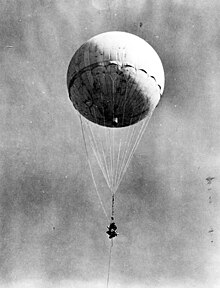
The Popular Resistance Committees is a coalition of a number of armed Palestinian groups opposed to what they regard as the conciliatory approach of the Palestinian Authority and Fatah towards Israel.

Nahal Oz is a kibbutz in southern Israel. Located in the northwestern part of the Negev desert close to the border with the Gaza Strip and near the development towns of Sderot and Netivot, it is under the jurisdiction of Sha'ar HaNegev Regional Council. In 2022, it had a population of 479. A nearby IDF military base is known by the same name.
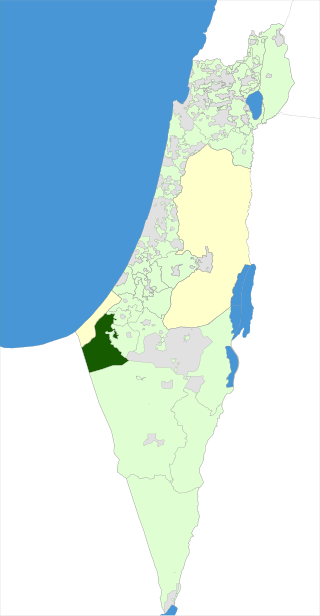
Eshkol Regional Council is a regional council in the north-western Negev, in Israel's Southern District. The regional council's territory lies midway between Ashkelon and Beersheba, bounded on the west by the Gaza Strip while the eastern border abuts the territory of the Bnei Shimon Regional Council. Due to its proximity to the Gaza Strip, the region has experienced numerous sporadic waves of violence, primarily as a result of rocket attacks, mortar strikes, and fires caused by incendiary kites and balloons launched from Gaza Strip. These waves of violence often result in widespread damage to farms and structures within the region.

Mefalsim is a kibbutz in southern Israel. Located near the Gaza Strip and covering 11,000 dunams, it falls under the jurisdiction of Sha'ar HaNegev Regional Council. In 2022 it had a population of 1,057.

The Gaza War, also known as Operation Cast Lead, also known as the Gaza Massacre, and referred to as the Battle of al-Furqan by Hamas, was a three-week armed conflict between Gaza Strip Palestinian paramilitary groups and the Israel Defense Forces (IDF) that began on 27 December 2008 and ended on 18 January 2009 with a unilateral ceasefire. The conflict resulted in 1,166–1,417 Palestinian and 13 Israeli deaths. Over 46,000 homes were destroyed in Gaza, making more than 100,000 people homeless.
Incidents in the Gaza War include incidents involving attacks against civilians, a school, a mosque, and naval confrontations.
Animal-borne bomb attacks are the use of animals as delivery systems for explosives. The explosives are strapped to a pack animal such as a horse, mule or donkey. The pack animal may be set off in a crowd.

Kerem Shalom border crossing is a border crossing at the junction of two border sections: one between the Gaza Strip and Israel, and one between the Gaza Strip and Egypt. It is used by trucks carrying goods from Israel or Egypt to the Gaza Strip.
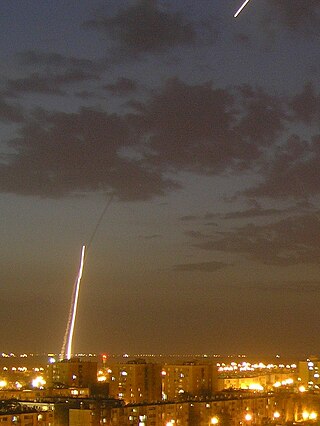
In November 2012, the Israel Defense Forces (IDF) launched Operation Pillar of Defense, which was an eight-day campaign in the Hamas-governed Gaza Strip, beginning on 14 November 2012 with the killing of Ahmed Jabari, chief of the Gaza military wing of Hamas, by an Israeli airstrike.
The 2012 Israeli operation in the Gaza Strip was a military operation carried out in the Gaza Strip by the Israel Defense Forces starting on 14 November 2012, following rocket attacks on Israeli territory launched from Gaza during the preceding days.
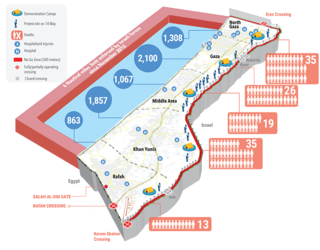
The 2018–2019 Gaza border protests, also known as the Great March of Return, were a series of demonstrations held each Friday in the Gaza Strip near the Gaza-Israel border from 30 March 2018 until 27 December 2019, in which Israeli forces killed a total of 223 Palestinians. The demonstrators demanded that the Palestinian refugees must be allowed to return to lands they were displaced from in what is now Israel. They protested against Israel's land, air and sea blockade of the Gaza Strip and the United States recognition of Jerusalem as capital of Israel.
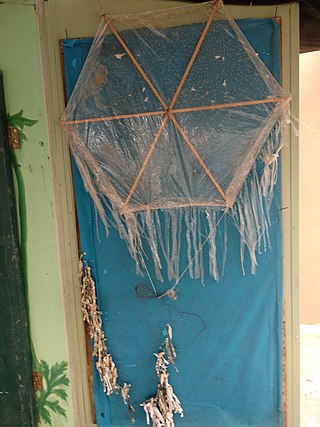
An Incendiary kite(also Firebomb kite, flaming kite, Fire Kite) is a kite with a bomb, incendiary device, or Molotov cocktail attached.
The Sons of Zouari are a militant group in Gaza who claim to be responsible for launching incendiary kites and balloons into Israel causing damage to fields and land, during the 2018 Gaza border protests. The group's name is a reference to Hamas’s chief drone expert and engineer Muhammad Zouari. In June 2018, the IAF targeted the car of one of the group's leaders, though the car was empty at the time. The group targets both houses and land. Damage by kites has caused damage to thousands of acres of Israeli farmland near Gaza during the 2018 Gaza border protests.

Light Blade is a laser-based air defense system intended to intercept airborne devices such as incendiary balloons, incendiary kites, and miniature UAVs such as quadcopters, and RAM threats. When first deployed in 2020, it was the first laser air defense system in the world.
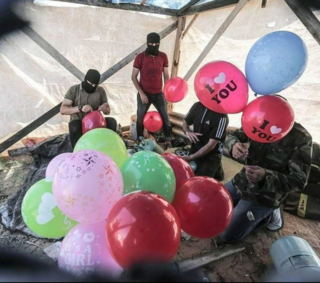
The first wave of Palestinian airborne arson attacks on Israel from Gaza Strip using airborne incendiary devices was launched in May 2018 during the 2018 Gaza border protests. These attacks are taking an advantage of the prevailing westwards winds which propel the airborne devices to Israel. The fires that ensued annihilated distinctive habitats, ecosystems, and agricultural fields.


